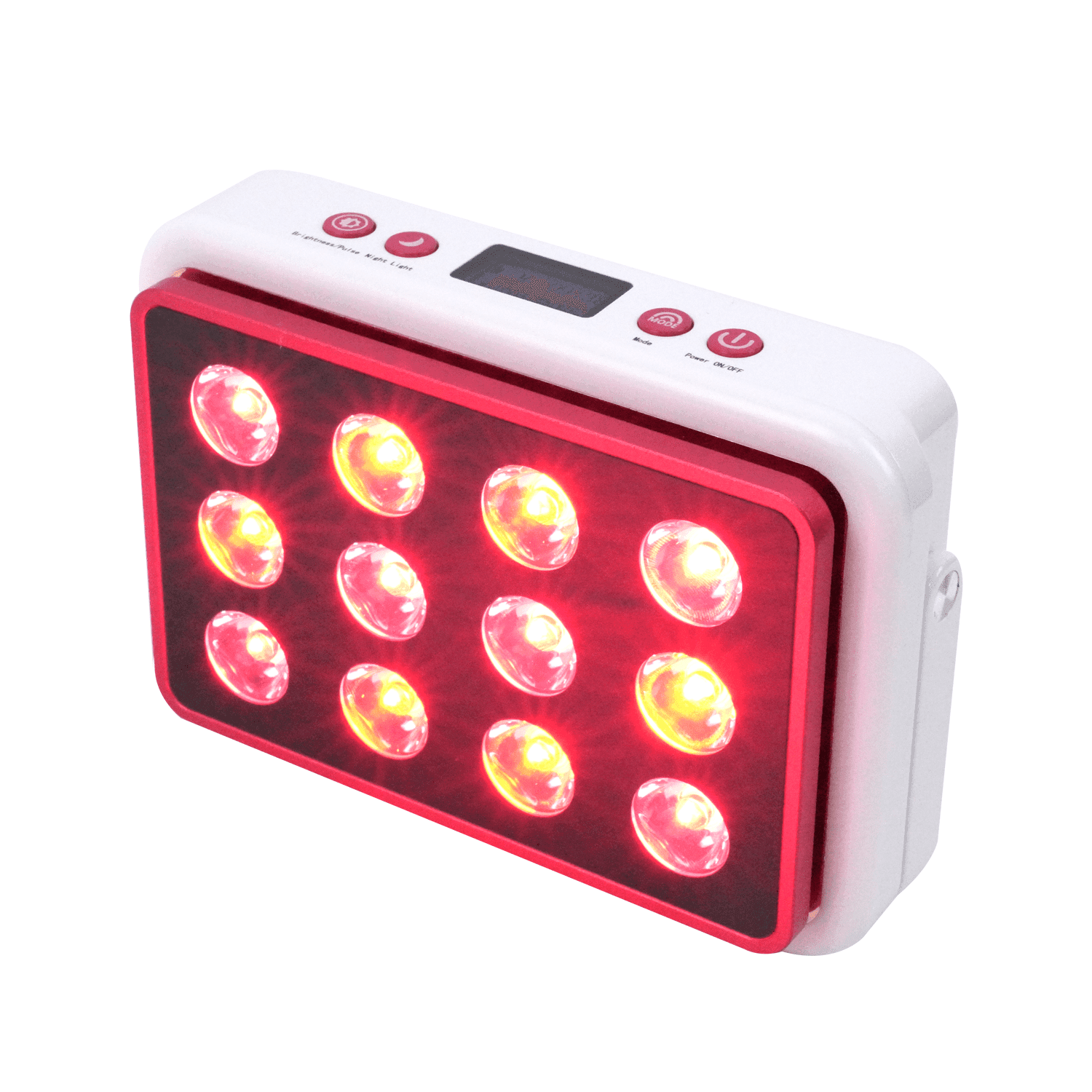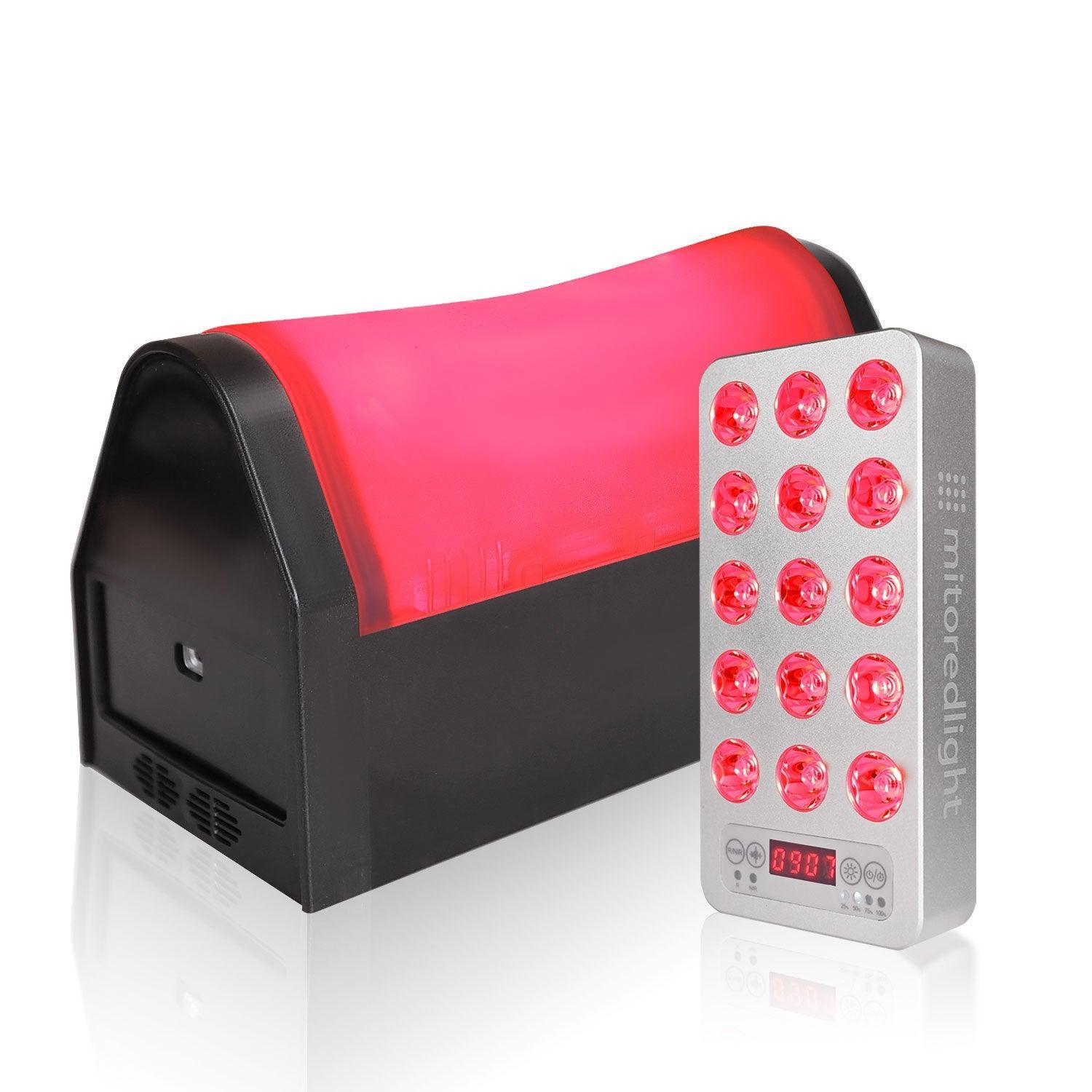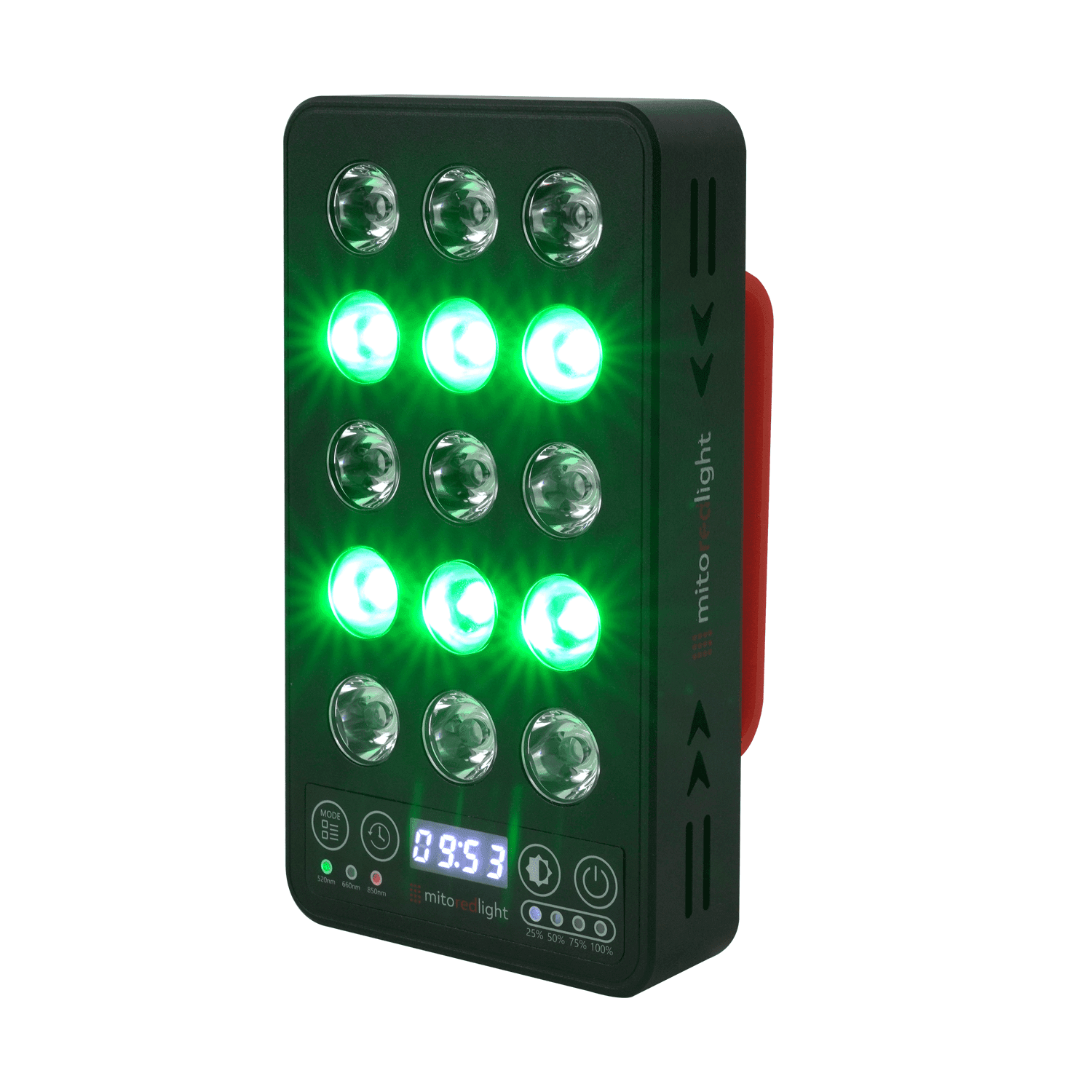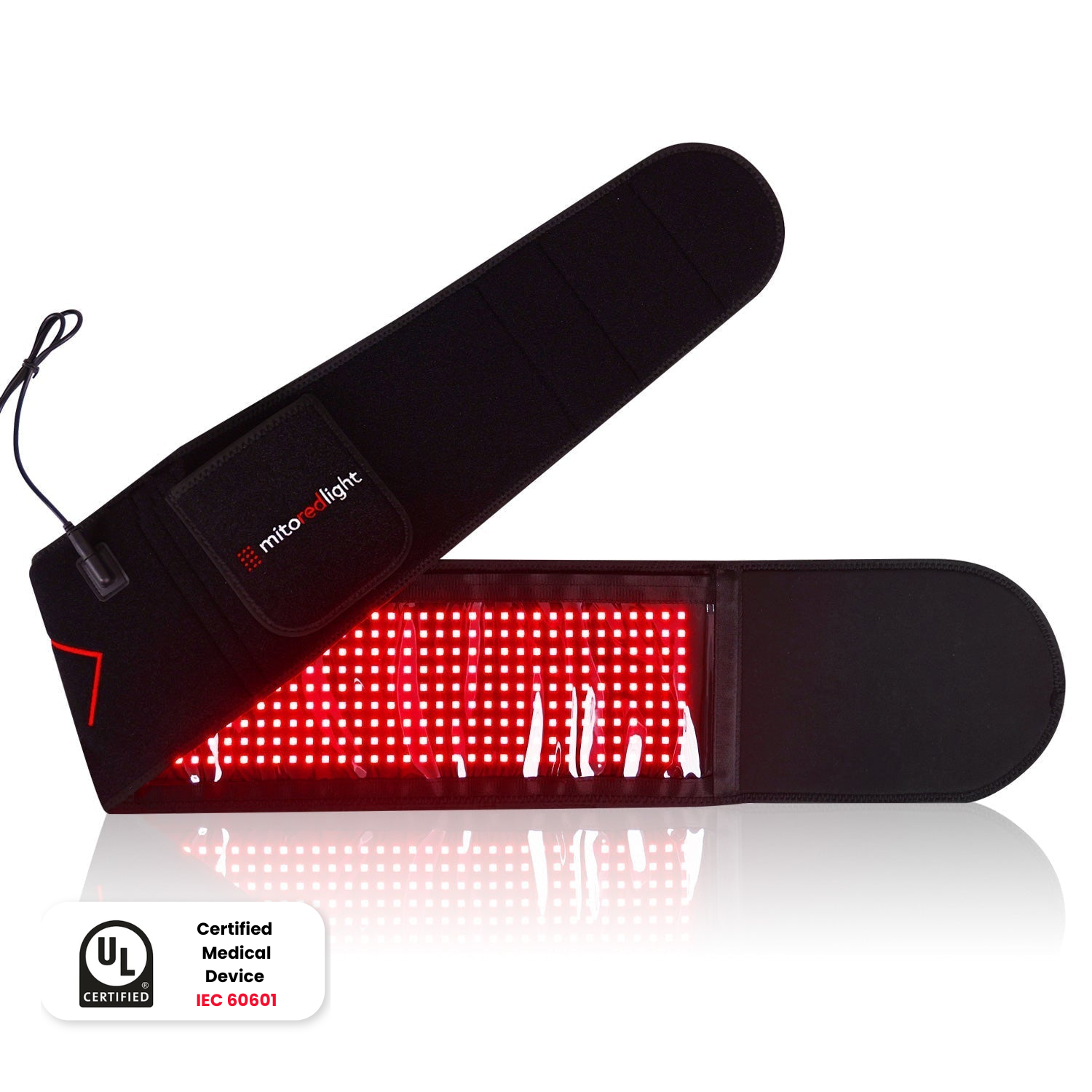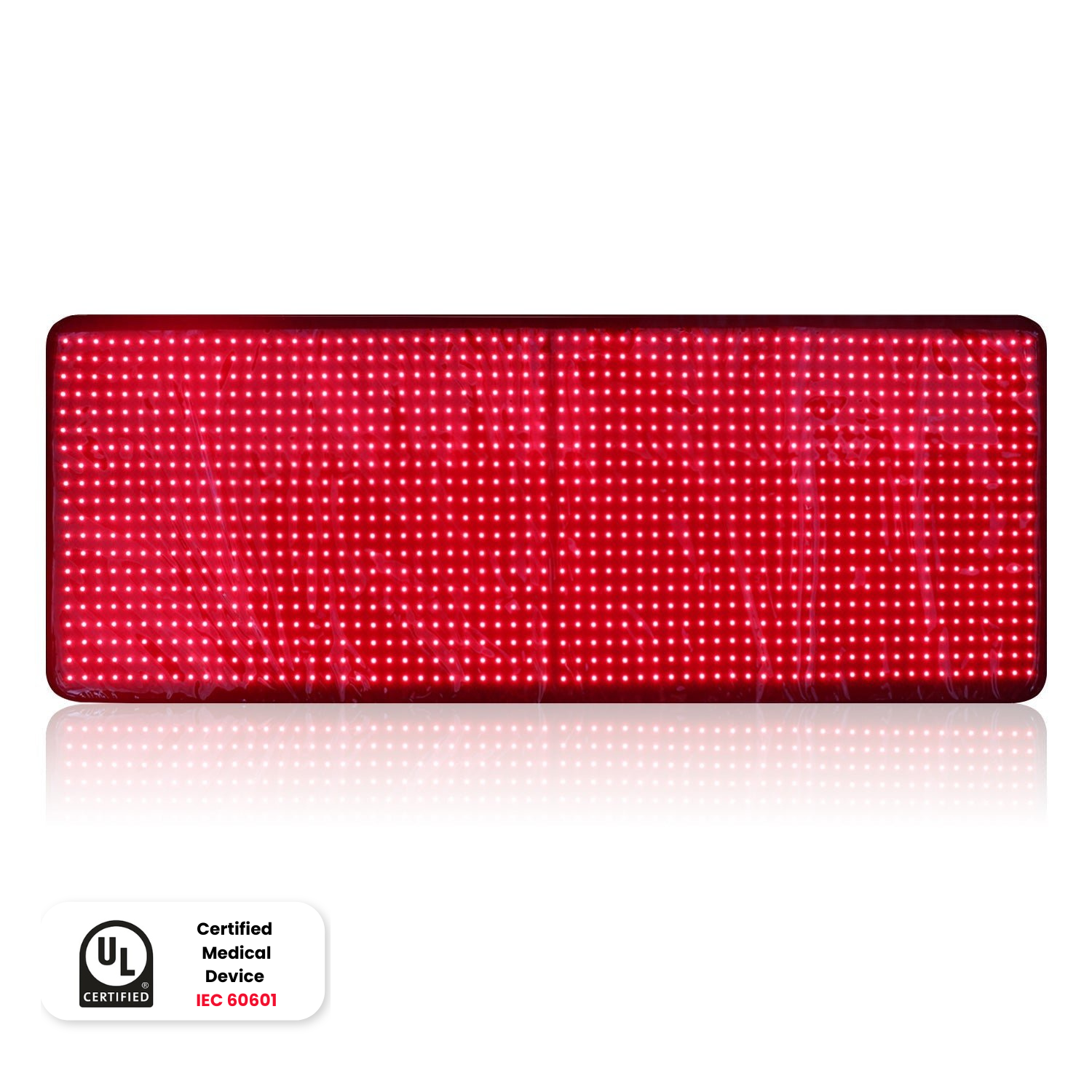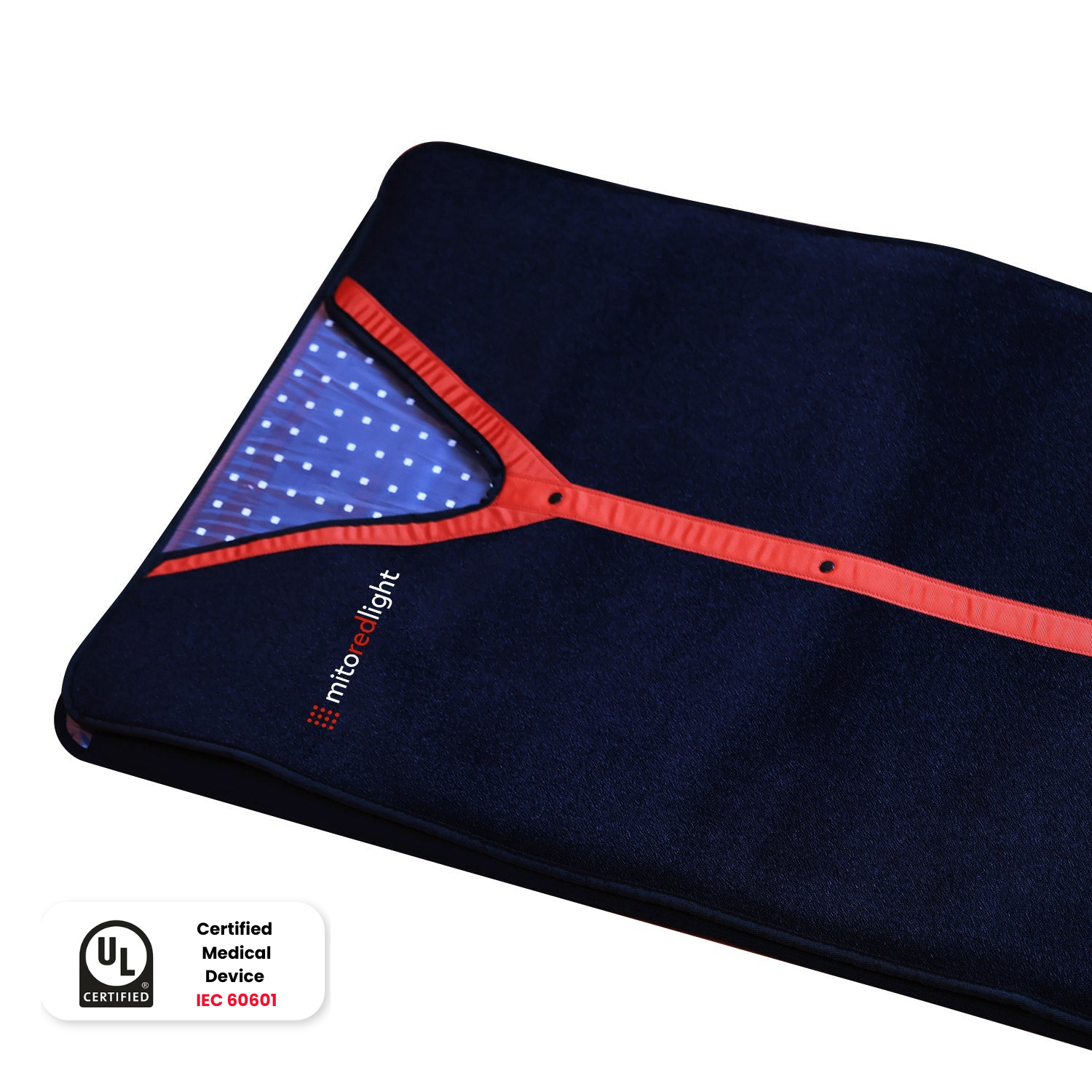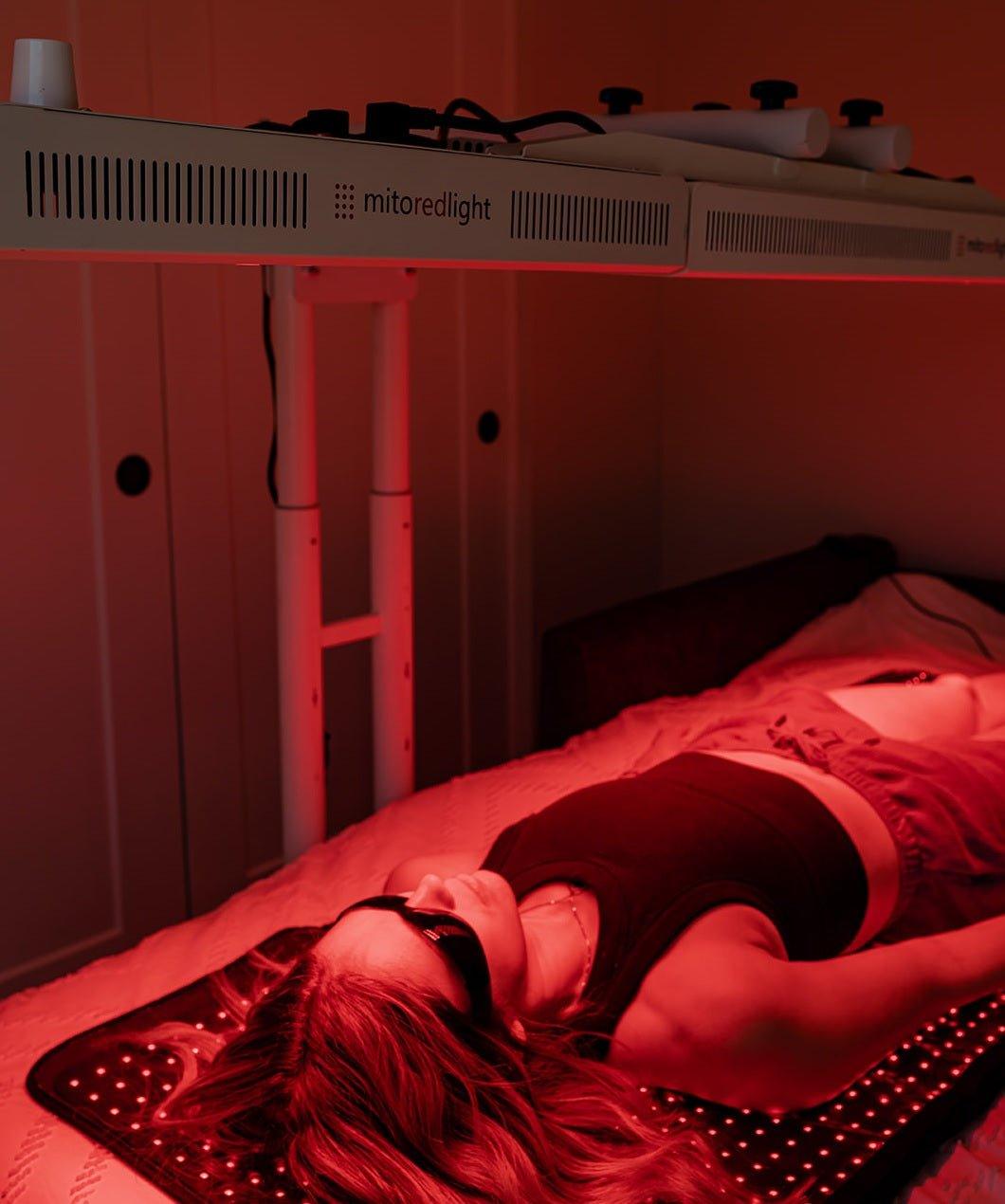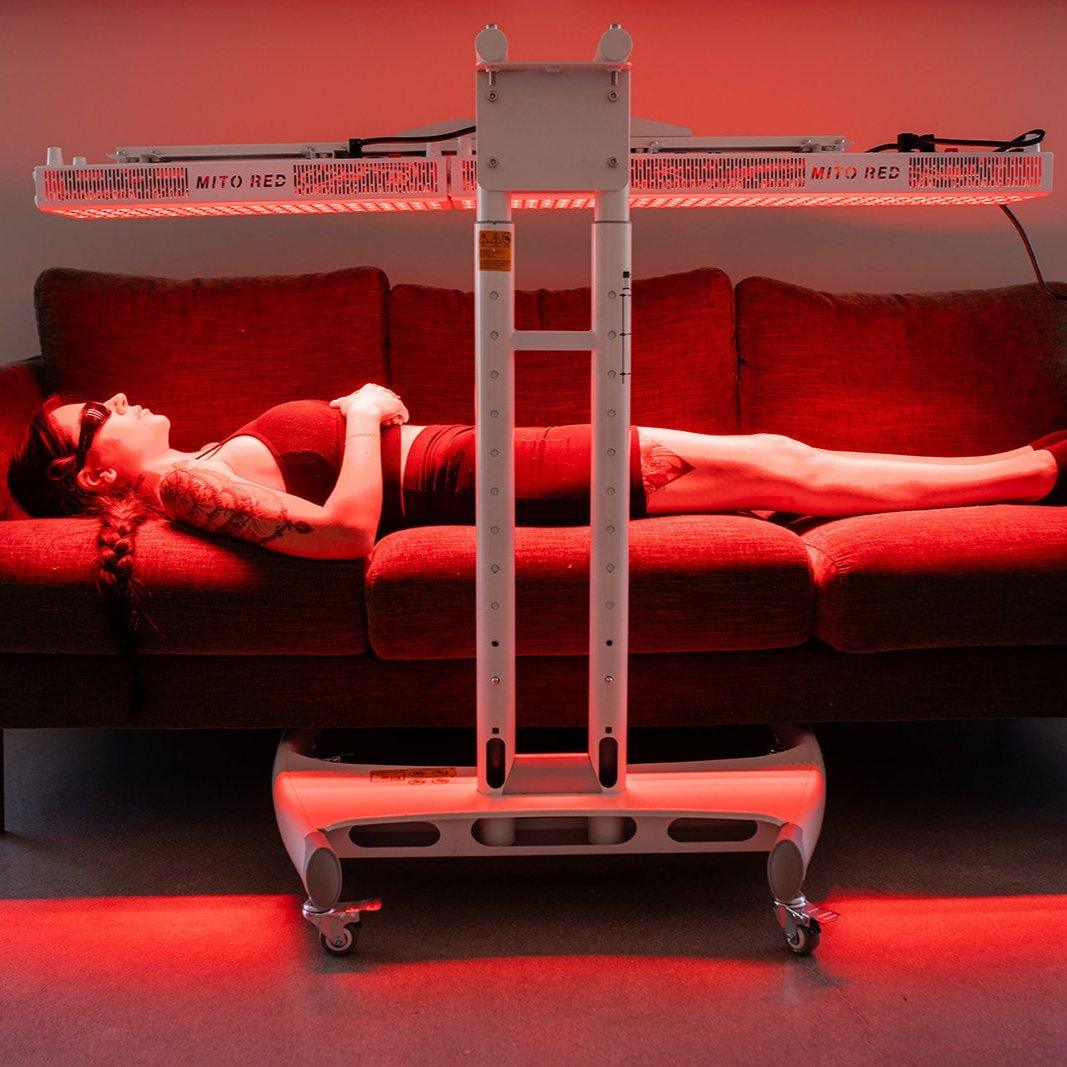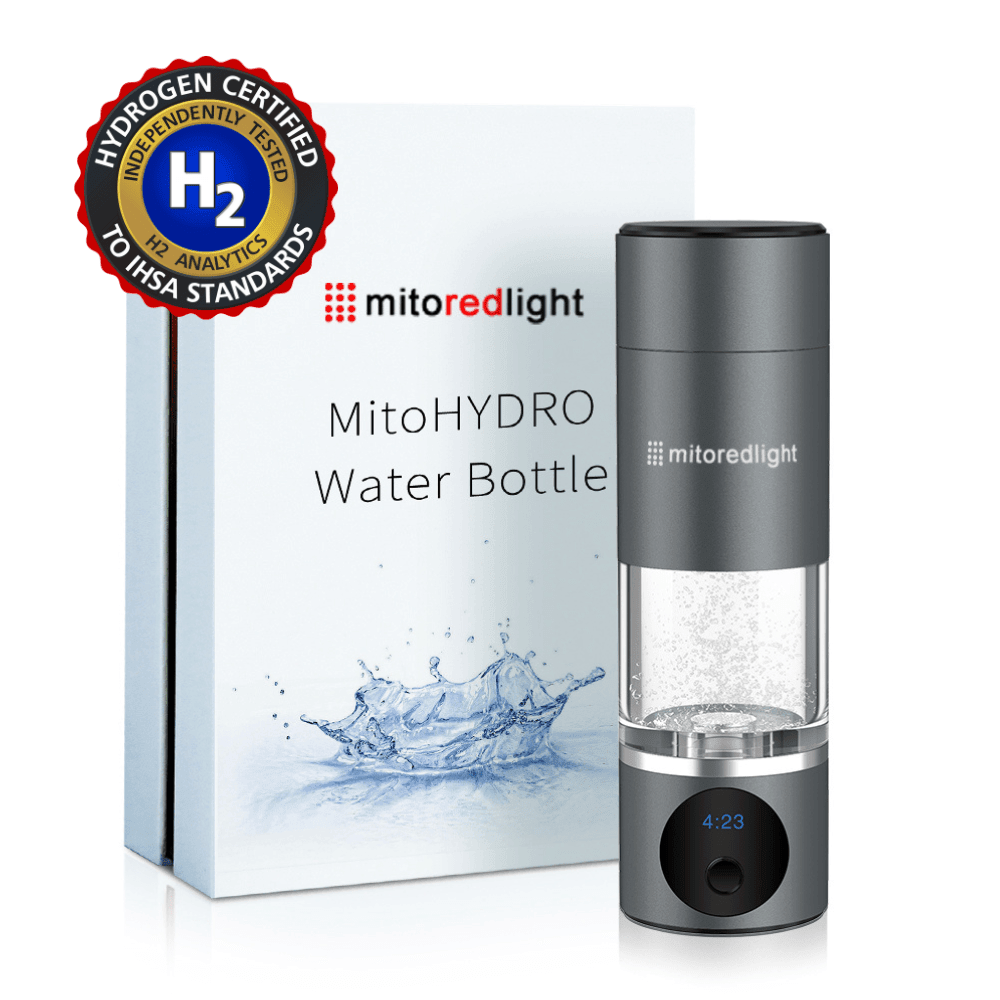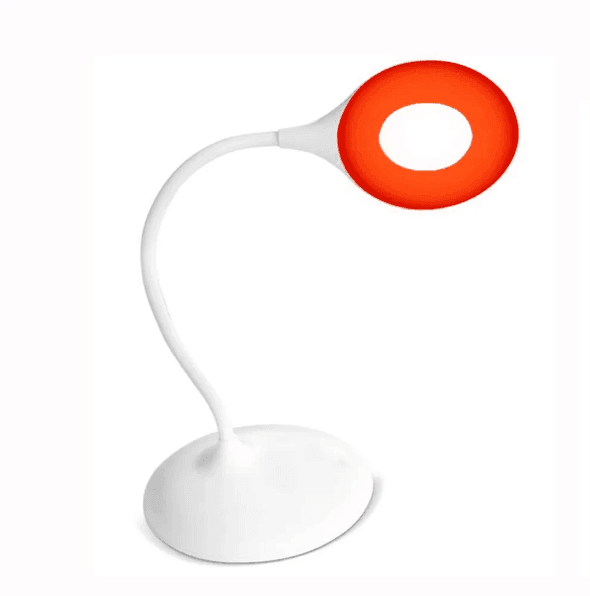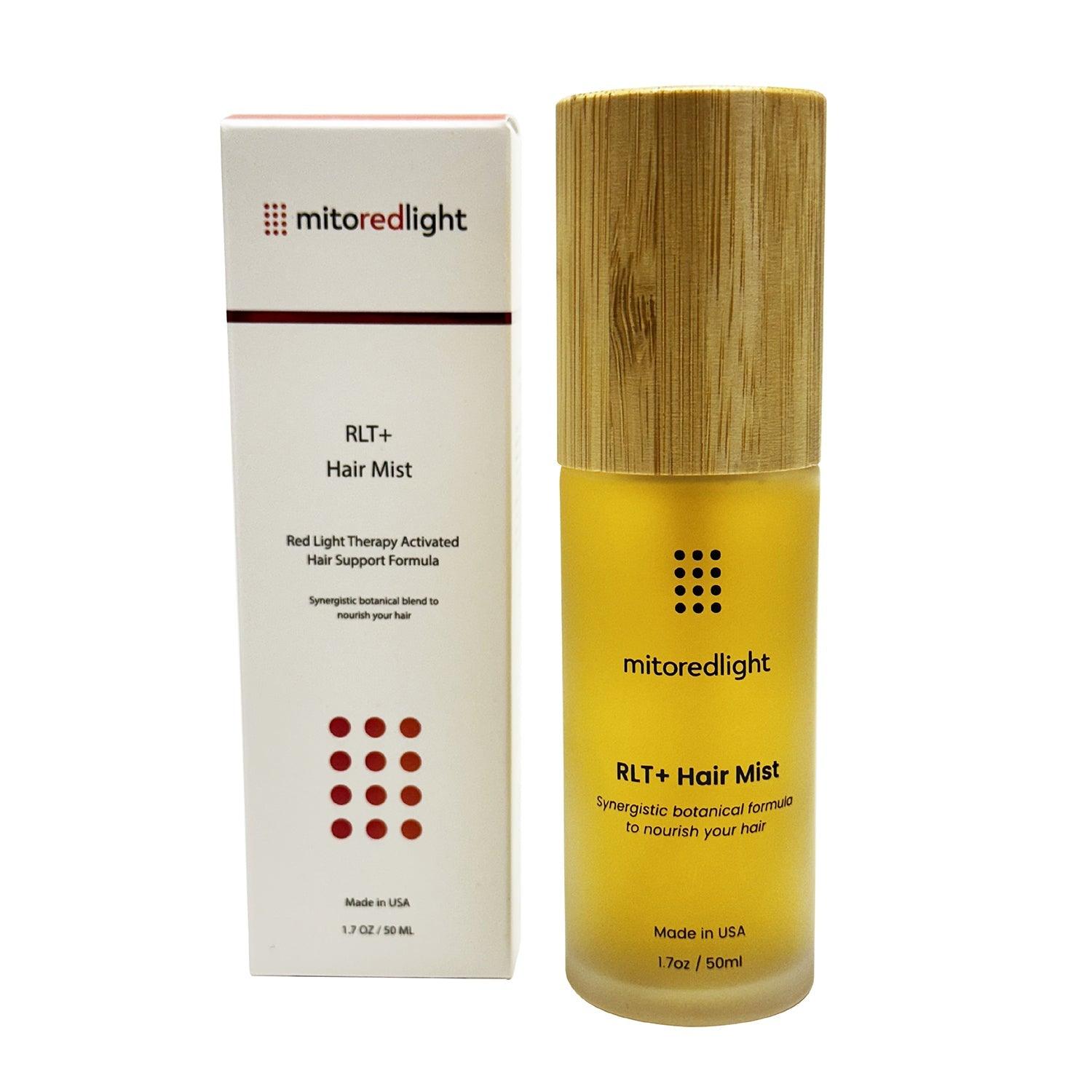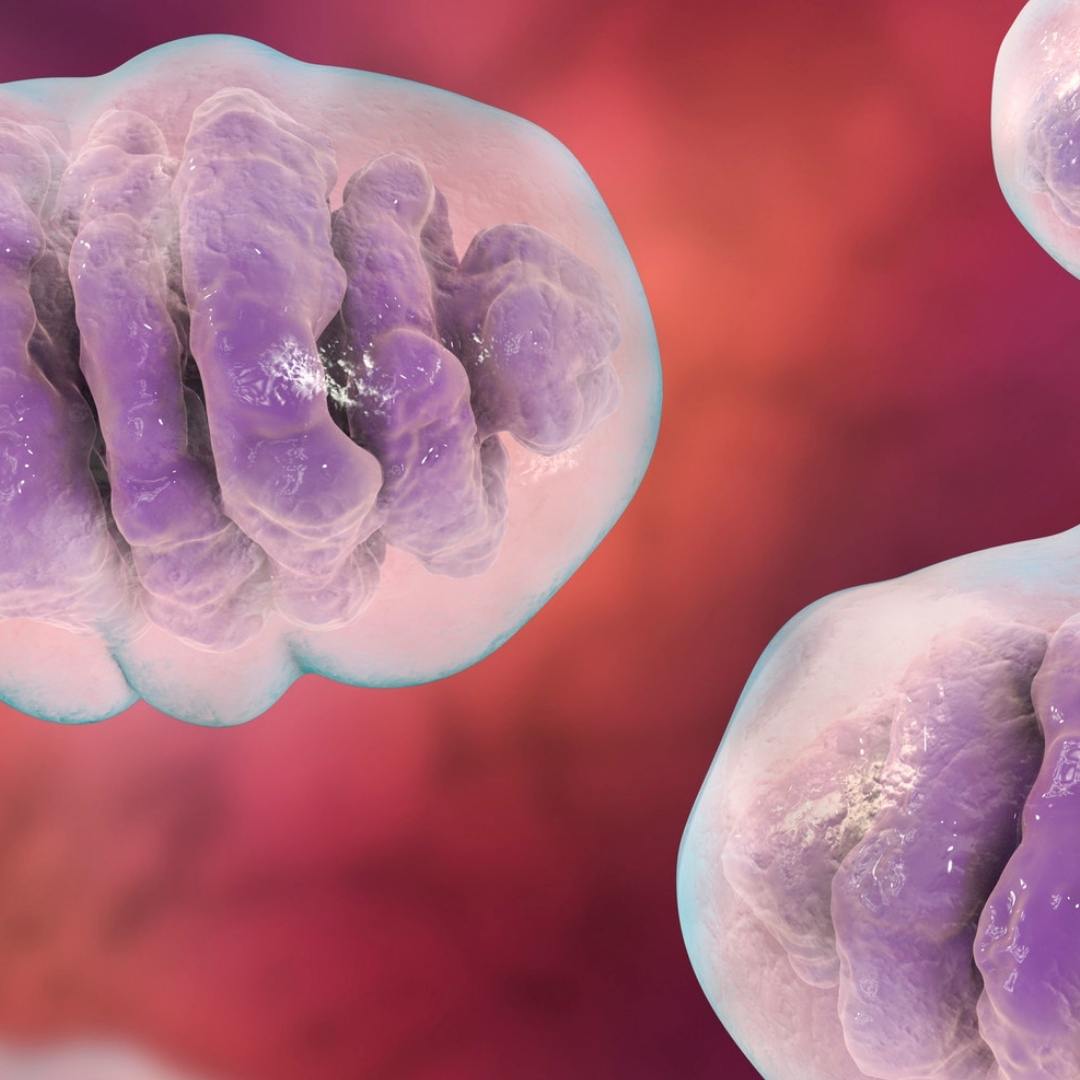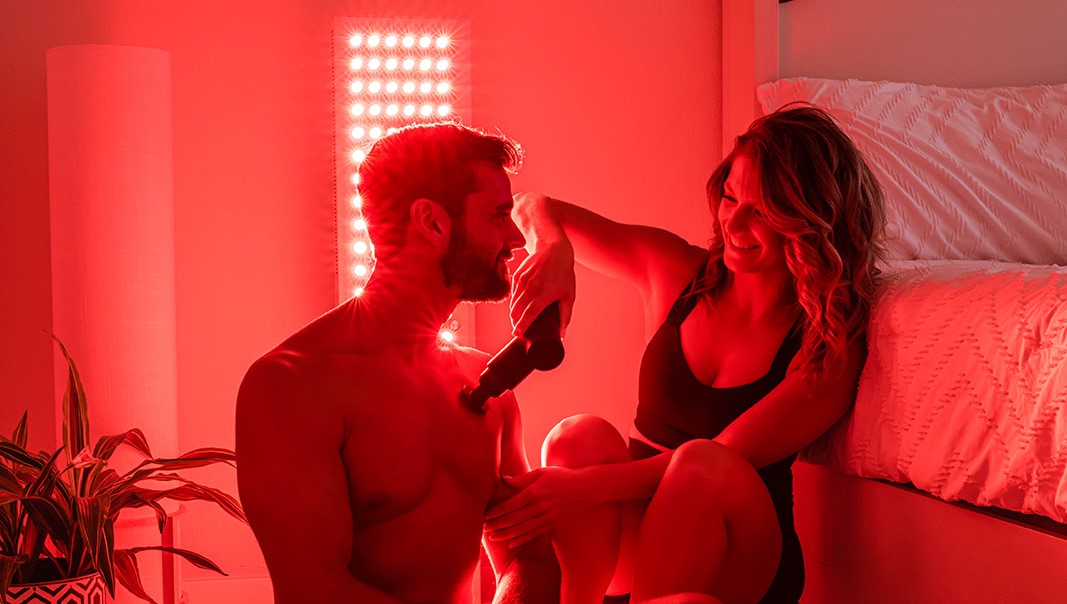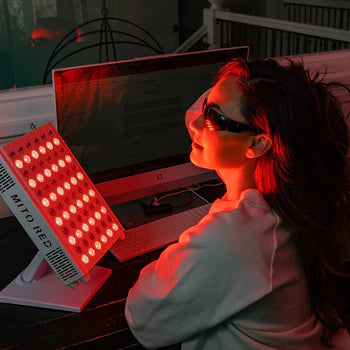DISCLAIMER: Mito Red Light devices are Class II wellness devices aimed at affecting the body through topical heating and supporting cellular function. The information provided in this article and on this site is for educational purposes only and is not intended to imply effectiveness of Mito Red Light devices for any specific application. The information provided in this article and on this site is not intended to diagnose, treat, cure, or prevent any disease, is not a substitute for consultation with a licensed medical provider and should not be construed as medical advice. Click here to read our article on potential contraindications of red light therapy..
Medically Reviewed by | Heidi Wright, BSN, RN, PCCN
Red light devices are popping up everywhere, from your favorite social media influencer’s feed to your doctor’s office. You want to know, are they hero or hype? We’ve got the answers, including what they are, how they work, whether they are a reliable treatment option for certain conditions, and how you can use them in your day-to-day life.
What Is Red Light Therapy?
Red light therapy is part of a system of photomedicine that uses different wavelengths of light to restore the body, rejuvenate the skin, treat physical ailments, address chronic pain, speed workout recovery, improve and deepen sleep, and even help reverse the aging process. This type of treatment goes by other names, including photobiomodulation, LED light therapy, phototherapy, and near-infrared light therapy.
Red light and near-infrared light (NIR light) are part of the electromagnetic spectrum of light emitted by the sun. Red light is visible, NIR light is invisible. These light waves are capable of penetrating the skin, reaching soft tissue and hard tissue.
At this level, red light and NIR light can stimulate tissues and change how they behave, and that is where the red magic happens.
How Does Red Light Therapy Impact Cells?
No, it’s not magic. It’s science. If you remember studying cells in junior high, you might remember learning about the powerhouses inside our cells known as mitochondria. The mitochondria in our cells are responsible for giving the cells their energy, which cells then use to carry out cellular function.
That might not seem like a big deal on the surface, but when you consider the fact that our cells are the foundation of every tissue, organ, and system in our bodies, the humble cell suddenly becomes more important. When our cells are healthy and thriving, we experience deeper levels of wellness, from our hair growth to our skin conditions, and even our athletic performance. Everything is affected by how well our cells are functioning.
The Cell Breakdown
Unfortunately, changes in our cells that cause them to experience declining function are somewhat inevitable. One might say that this is due to age, but researchers studying longevity and healthy aging say differently. They surmise that changes within the cell are the precursor to aging. In other words, the subtle changes in our cells cause our bodies to age.
A set of 12 specific cellular changes, known as the hallmarks of aging, are now thought to underlie all kinds of age-related illnesses and conditions.
Mitochondria Blues
Back to the mitochondria. One of the hallmarks of aging is mitochondrial dysfunction. This leads to less cellular energy, less cellular performance, and as you may have already guessed, an overall decline in our human performance and abilities system-wide.
Mitochondria have two big roles in our cells: to make adenosine triphosphate (ATP), and to release reactive oxygen species (ROS). ATP is good, it's the energy currency our cells use to carry out their functions. ROS is a necessary byproduct of ATP production, but ROS isn’t good for our cells. The problem is that when mitochondria begin to lose function, they produce less ATP (the good guys) and more ROS (the bad guys).
The results? Our cells become sick and damaged, and eventually, they may lose function altogether. It might sound like you’re piloting a sinking vessel, but thankfully, there are ways to heed the SOS call of your cells.
How Does Red Light Therapy Work?
Red light therapy works by stimulating the mitochondria in your cells, specifically enabling them to produce ATP more efficiently. The process by which ATP is created can get a little complicated.
The simplified version goes something like this:
- You eat food.
- Food is broken down into glucose.
- Glucose gets sent to the cells that need it for energy, but it’s too big for the tiny organelles inside the cells to use.
- Mitochondria, through the Krebs Cycle, change the glucose into molecules that are much smaller.
- These smaller molecules get shuttled down the electron transport chain (ETC), which is a series of gradients that chemically (read: magically) turn them into ATP.
- ATP gets shuttled to the organelles in the cells to be used for energy.
- Cells are happy, your body is happy, and you are happy.
Red light therapy works by ensuring the 5th step is efficient and fast. Specifically, a molecule known as cytochrome c oxidase (one of the molecules that live in the ETC gradient) is able to absorb this light, and when it does, it gets really excited and works harder. Think of it like an energy boost button. This molecule makes the shuttling of molecules through the ETC gradient fast and effective, resulting in better efficiency and speed in the ATP production process.
Bottom line: Red light therapy works by stepping in to supercharge the way your cells produce energy, and that translates to more optimal performance throughout your entire body.
Can’t Other Wavelengths of Light Do the Same Thing?
No. Red light and NIR work because they reach into deeper layers of your skin and body than other wavelengths. Consider UV rays, for instance. These are high-energy wavelengths that are incredibly powerful, but they can only penetrate the skin, and after a short (for some people very short) period of time, they become harmful and burn, and can even result in skin cancer.
Red light and NIR have long wavelengths that are able to penetrate more deeply, without damage, and while actually delivering benefits.
What Are the Top Benefits of Red Light Therapy?
The potential benefits of red light therapy are immense, and that makes sense. This technology has been around for decades.
Let’s dig a little deeper and learn just how red light therapy can benefit the body in these specific ways.
1. Enhancing Skin Health and Appearance
Red light therapy has shown remarkable potential in enhancing the health and appearance of the skin. Many users report a visible reduction in fine lines and wrinkles after consistent treatment. The therapy works by stimulating collagen production, which is crucial for maintaining skin elasticity and firmness. Collagen, often referred to as the skin’s scaffolding, has shown that it can benefit from red and near infrared wavelengths.
In addition to boosting collagen, red light therapy may also help improve skin tone and texture. Many individuals struggle with uneven skin tones, acne scars, or age spots. By encouraging the body’s natural healing processes, red light therapy helps rejuvenate the skin and promote an even complexion. Regular use can lead to a more youthful, vibrant look, making it a popular choice among those seeking a natural approach to skincare.
Moreover, the anti-inflammatory properties of red light therapy can help calm irritated skin conditions. Users often report feelings of relaxation and comfort during sessions, which can significantly benefit those with chronic skin issues. This soothing effect adds to its appeal, making red light therapy not just a beauty modality, but a relaxing, therapeutic experience.
2. Reducing Inflammation
One of the standout red light therapy benefits is its ability to reduce inflammation. This has profound implications for many individuals. By targeting the affected areas with specific wavelengths of light, the therapy promotes circulation and speeds up the healing process, effectively reducing swelling and discomfort.
Numerous studies have demonstrated that red light therapy may lead to significant improvements - particularly in the health of joints or muscle soreness. For athletes or fitness enthusiasts, this can mean faster recovery after intense workouts, allowing them to return to their training sooner.
3. Boosting Muscle Recovery and Performance
When it comes to enhancing athletic performance, red light therapy has emerged as a game-changer. By improving circulation and reducing inflammation, it facilitates quicker muscle recovery. This means that athletes can train harder and longer without the same risk of fatigue or injury. The therapy’s ability to accelerate healing not only benefits seasoned athletes but also casual gym-goers looking to enhance their fitness levels.
Furthermore, athletes frequently use red light therapy to prepare their muscles before intense activities. By warming up the tissues and enhancing blood flow, they often experience an increase in stamina and endurance. This proactive approach allows them to push their limits while minimizing the likelihood of post-workout soreness.
4. Improving Hair Growth for Thinning Hair
A lesser-known potential benefit of red light therapy is in promoting hair growth, especially for those experiencing thinning hair or early signs of balding. The therapy invigorates hair follicles by stimulating blood flow to the scalp, leading to enhanced nutrient delivery. This can result in healthier, fuller hair over time.
People undergoing red light therapy for hair loss often share stories of renewed confidence. While there can be a gradual improvement, many users notice results within a few months, making the therapy a viable option for those seeking a non-invasive remedy for hair thinning. With consistent use, individuals may find a noticeable difference in hair density, which has a significant positive impact on self-esteem.
Related Article:* A Deep Dive into the RLT+ Hair Mist*
5. Alleviating Symptoms of Anxiety and Depression
Surprisingly, red light therapy can play a role in alleviating symptoms of anxiety and depression. By influencing hormonal balance and neurotransmitter levels, red light sessions may promote a sense of calm and emotional wellbeing. The gentle wavelengths of light emitted during red light therapy engage the brain’s biochemical pathways, which may reduce feelings of anxiousness.
Many users also report improved sleep quality. It’s well-known that anxiety and depression can disrupt sleep patterns, creating a vicious cycle. With the right therapy, individuals may experience deeper, more restorative sleep, enabling them to wake up refreshed and ready to face the day. This holistic benefit underscores red light therapy’s versatility in supporting mental health.
6. Accelerating Wound Healing
The wound healing properties of red light therapy are both impressive and crucial for recovery from injuries, surgeries, or chronic wounds. Studies indicate that exposure to red light can significantly speed up the healing process. The mechanism behind this is tied to increased collagen production and accelerated cellular regeneration in the area of injury.
Those who incorporate red light therapy into their recovery regimen often notice reduced scar tissue formation and minimized pain, which are substantial advantages for anyone looking to heal more effectively. Whether it’s a minor cut or a more severe injury, the therapy can play a pivotal role in enhancing overall healing outcomes.
7. Supporting Joint Health
Red light therapy offers a promising solution for enhancing joint health. The therapy targets inflamed areas, reducing swelling, which many arthritis patients find incredibly beneficial. Not only does it relieve symptoms, but it can also improve joint mobility and functionality.
With continued use, red light therapy can empower those suffering from joint issues to regain a better quality of life. Users report increased ease in performing daily tasks that were once hindered. This renewed freedom provides a much-needed sense of normalcy and independence, highlighting why many are incorporating this therapy into their regular health routines.
8. Enhancing Sleep Quality and Circadian Rhythm
The effects of red light therapy extend to improving sleep quality and maintaining a healthy circadian rhythm. Many individuals struggle with sleep-related issues, often turning to various remedies without success. Red light therapy can help recalibrate the body’s internal clock, making it easier to fall asleep and wake up refreshed.
By promoting the production of melatonin, the hormone responsible for regulating sleep cycles, red light therapy can be a simple, yet powerful tool for those looking to enhance their sleep patterns. It creates a tranquil environment that fosters relaxation, allowing users to drift off peacefully and enjoy deeper sleep.
Related Article: Red Light Therapy and Quick Tips to Getting Better Sleep
9. Promoting Better Cellular Function and Energy
At the cellular level, red light therapy enhances cellular function, ultimately promoting overall health and energy levels. By encouraging mitochondrial function, the therapy assists cells in producing more energy, contributing to improved vitality and stamina. For many, this can mean more energy to tackle daily tasks and maintain an active lifestyle.
Moreover, increased energy production at the cellular level can positively impact one’s mental clarity and focus. Individuals often report a heightened sense of alertness and cognitive function, making red light therapy an appealing option not just for physical wellness, but for mental acuity as well. This unique blend of benefits underscores its versatility and importance as a holistic health tool.
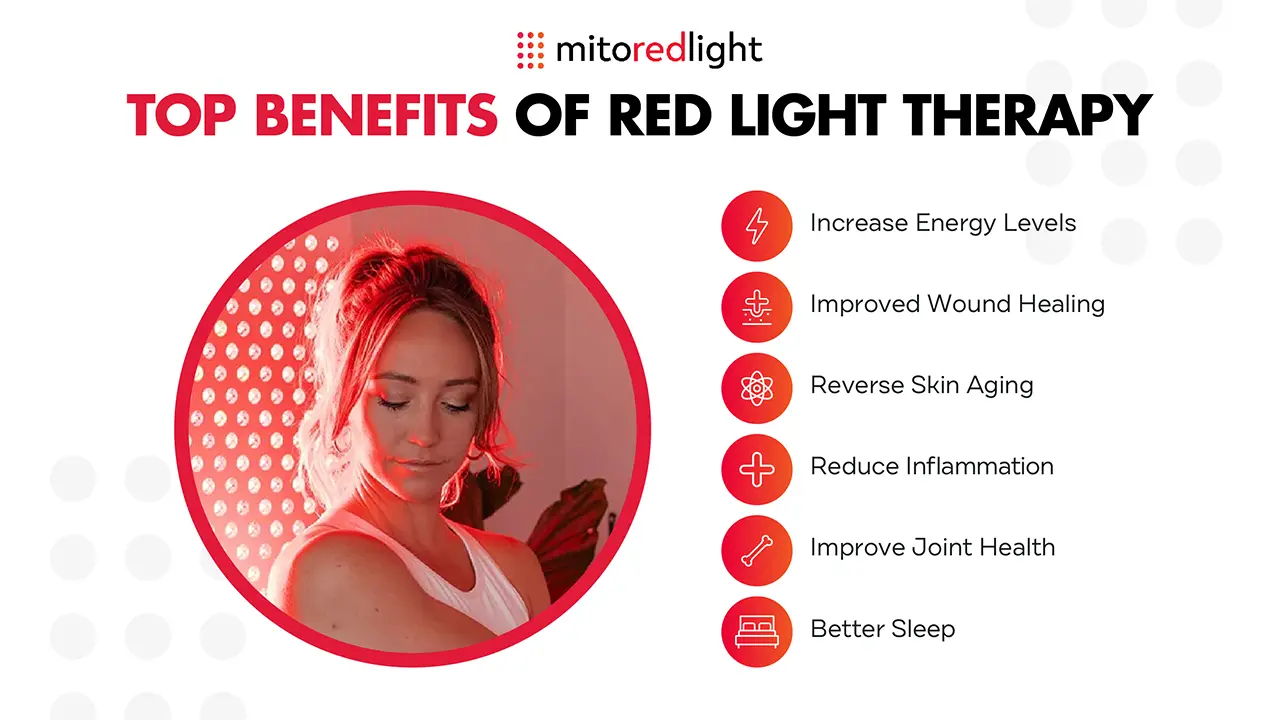
Mito Red Light
Not all red light therapy devices are created equal. For red light therapy to be worth the investment, you need a high-quality, independently tested, professional red light therapy device from a reputable company. With over 6 years in business and over 100,000 ecstatic customers, Mito Red Light is a brand you can trust. Our reviews speak for themselves.
If you have any questions, please contact us at our phone customer support line: 1-866-861-6486.
Find Commercial Mito Red Light Therapy Near Me
To learn more about how red light therapy works, read How Does Red Light Therapy Work?
Related Articles:
Infrared Sauna vs. Red Light Therapy
7 Health Benefits of Infrared Saunas
Red Light Therapy Masks vs. Panels
Sources:
Transcranial near-infrared light in treatment of neurodegenerative diseases | Frontiersin.org
Hallmarks of aging: An expanding universe | PubMed
Low-level laser (light) therapy (LLLT) in skin: stimulating, healing, restoring | PMC
What Are Sleep Deprivation and Deficiency? | NHLBI, NIH
Red Light and the Sleep Quality and Endurance Performance of Chinese Female Basketball Players | PMC
Photobiomodulation in human muscle tissue: an advantage in sports performance? | PMC



